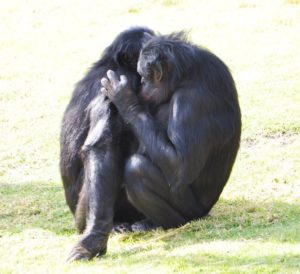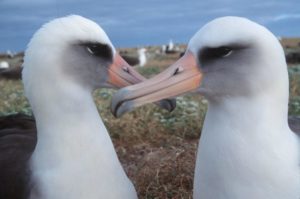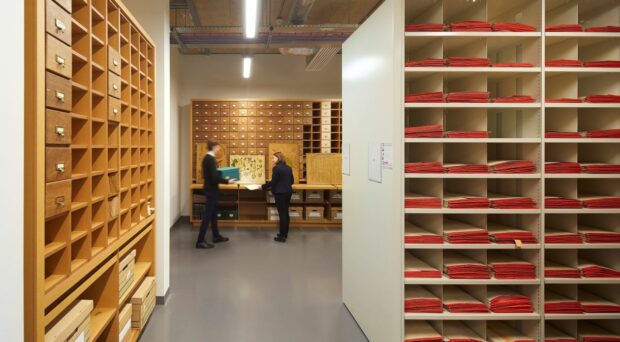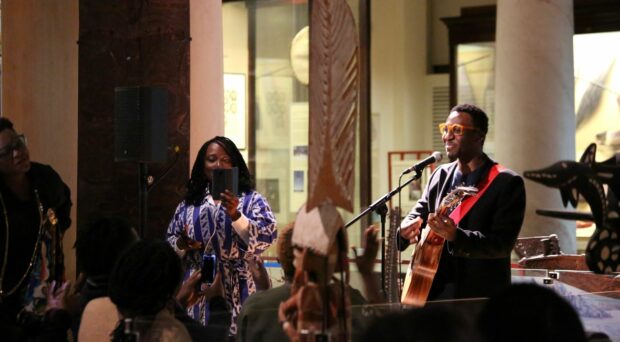There is so much to be gained from looking at the animal kingdom at large from a queer perspective. Not only does it throw our own behaviours into sharp relief but also shows up the shortcomings of our human obsession with categories and identity says The Museum of Zoology Bridging Binaries volunteer, Kate.
The best bit for the LGBTQ+ community is that even a cursory look at the abundance of queer behaviour in animals totally debunks the myth that this behaviour is any way ‘unnatural’. Sexual activity, courtship and pair bonding is found throughout the animal kingdom, from manatees to mallards, lions to lizards. And what’s more is that it’s totally normalised. It’s not called anything – because animals don’t identify like humans do – they just do what they do and get on with it. Sociologist Professor Eric Anderson is often quoted as saying
“Animals don’t do sexual identity; they just do sex.”
Hey, maybe we could learn a thing or two from our fellow animal beings?
The Bonobo Sisterhood
Speaking of which, let me tell you about the bonobo: which, like humans, are one of the great apes, and with whom we share about 98.7% of our DNA. The Museum of Zoology doesn’t house a bonobo specimen, but you can view an example of a chimpanzee (it is only recently that the two have been recognised as separate species). Bonobos live in peaceful matriarchal communities and are known for their frequent and liberal use of sex as a tool for anything from cementing social bonds, countering violent tempers, to bartering for food or even just saying ‘Hi!’.

Image credit: Ted (bobosh_t), Flickr under Creative Commons
Same sex sexual behaviour is observed in both male and female bonobos both in the wild and in captivity; females engage in a ritual called “GG rubbing” whilst males use “bump rubbing” to reduce tension after a fight. The females run the show in bonobo communities; male bonobos stay with their mothers for life and they act as matchmaker, choosing a mate for her sons.
There’s so much we can learn from bonobos and their peaceful sisterhoods. Given how closely we are related maybe we are able to look to them to understand the future of human evolution. But let’s move further away from our mammalian relatives and look at another class of animals. One animal that I’ve never yet talked about in my tours is the albatross.
The ‘Lesbian’ Laysan Albatross?
The Museum of Zoology is home to a particularly spectacular specimen of an albatross which lives in the case on the right-hand side as you descend the stairs to the lower level. I’d say don’t miss it, but I don’t think you can! Previously thought of as an icon of heterosexual monogamy, there have been studies in recent years that have brought to light the tendency for same sex pairings amongst the Laysan albatross. On the island of Oahu in Hawaii 31% of nesting pairs are same sex couples. [1]

Image credit: Michael Lusk (Lusk_LAAL_6) Flickr, under Creative Commons.
These couples are unrelated females who pair with one another for multiple years to cooperate in rearing chicks. [2] Although both of the pair may lay an egg, only one will be incubated in any given year; once it is fertilized by a male, the two females will take it in turns to incubate it. Of course, human need to categorise and define, means that Laysan albatross have now been labelled as ‘lesbians’ in popular culture, but this identification is not a concern amongst albatross. There are several theories as to why this behaviour arises, such as the abundance of females in the male-female ratio amongst the Laysan albatross in Oahu, but what we can draw from it from a human perspective is that it is an accepted and naturally occurring behaviour.
I end my tours with a quote from Stephen Fry. It neatly sums up what can be gained from looking at queer behaviour in the animal kingdom.
“At least 260 species of animal have been noted exhibiting homosexual behaviour but only one species of animal ever, so far as we know, has exhibited homophobic behaviour — and that’s the human being.”
You can find out more about Bridging Binaries tours on the UCM website here https://museums.cam.ac.uk/bridgingbinaries – of course, they don’t run in person at present, but keep an eye on this blog for more snippets from the tours of other volunteers.
In the meantime, have a happy Pride month, and here’s to bonobo girl power!
[1] https://www.nationalgeographic.com/science/phenomena/2013/11/26/same-sex-mothers-letting-albatrosses-be-albatrosses/
[2] https://royalsocietypublishing.org/doi/full/10.1098/rsbl.2008.0191







